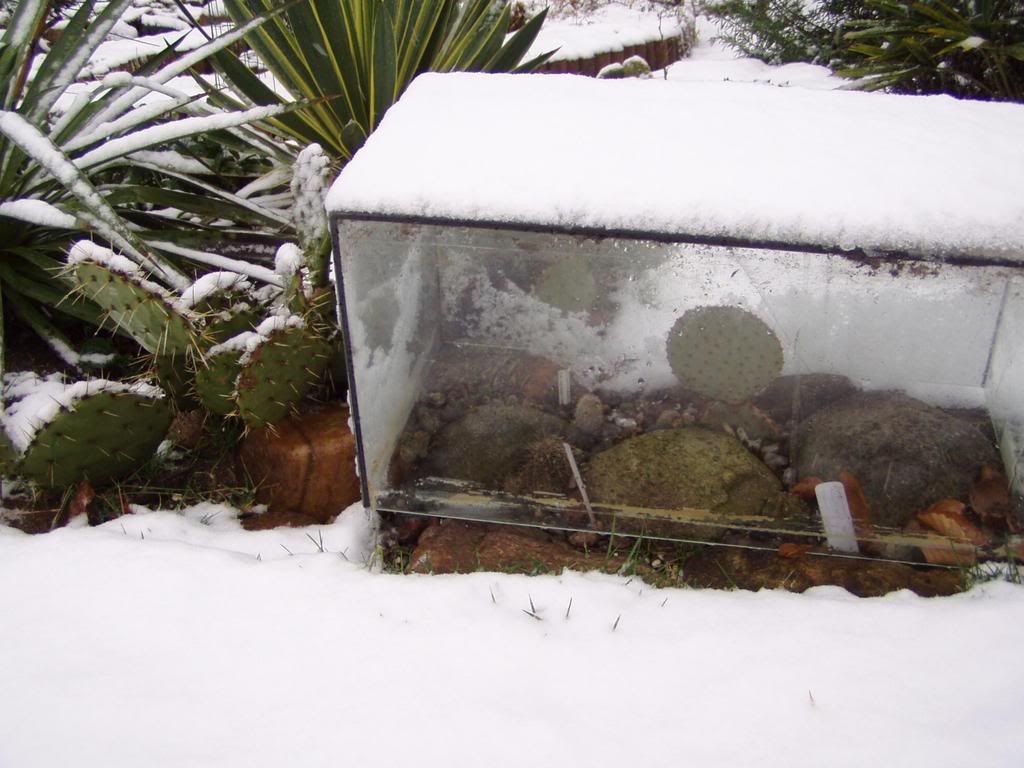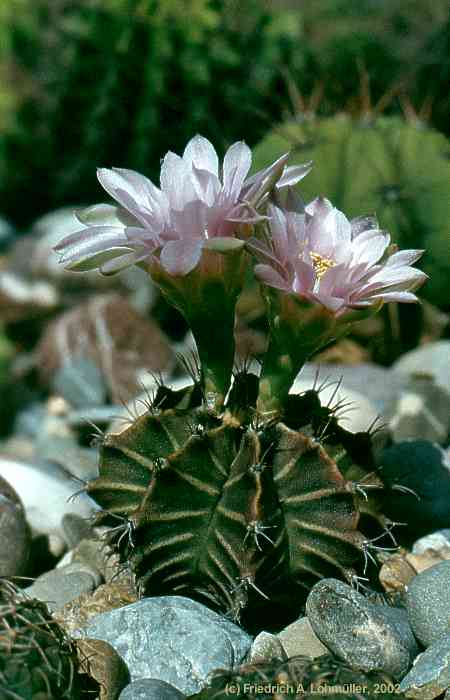1. To survive winters, cacti need loose soil and excellent drainage. Unlike other Garden plants, the challenge in growing cacti is the elimination of excess moisture. Sun exposure and drainage requirements can be met by placing cacti on a sunny hill or raised bed, and using ample gravel or sand mixed with a small amount of organic matter. A thin mulch of stone chips or gravel reduces the risk of crown rot.
2. Cacti naturally reduce their moisture content and shrivel with the onset of winter. This dehydration prevents cactus cells from bursting when they freeze. Excess moisture during autumn months can cause cacti to hold too much water and suffer freeze damage. Don't mulch cacti for winter protection, as you do with other plants.
3. Most cacti change color in the winter. This natural occurrence doesn't mean plants are sick. As plants become less active and the amount of green chlorophyll decreases, red, orange, and other color pigments show  through the pads or stems.
through the pads or stems.
4. Please check that your cactus are winter-hardy type. If they are not and you don't have a greenhouse or can't move them into your house, you should purchase a large amount of frost cloth from your local nursery to cover all frost sensitive cacti and succulents. If you are not sure what to cover, it is best to be safe by covering all of your succulents and thin skinned cacti such as cerus monstrauss, cerus puruvians, etc. Listen to the weather forecast at night and cover your cacti anytime temperatures will be under 40? F
Though it is true that most desert cacti aren’t winter hardy, a number of different species will survive in cooler areas. They include species of ball cactus, barrel cactus, prickly pear, and other kinds of Opuntias.
5. In winter, water plants very infrequently - about once every 3 to 5 weeks. It's the cacti nature to rest and stop growing in winter: dormancy So it doesn't need water much, otherwise, it'll be rot.
6. Although the cacti will have dormancy in the winter, it need still the proper light. Cacti should be kept cool and dry to stop them turning a funny shape.
You don't have to worry about exactly when they stop growing, just make sure the pots have dried out before it gets too cold and dark for them to ever dry out. You absolutely don't want a plant to be sitting in wet soil for 4 months because it doesn't need the water and the pot won't dry out by evaporation.
In spring, watch out for plants which have lost their roots, they may be loose in the pots and will have to be given time just like a cutting. Many more will have lost all their fine feeder roots, which is a natural reaction to drought, and they should be watered cautiously once or twice before completely drenching the pot.
You can find more information from www.cactiguide.com It's the good source about cactus & succulent.



